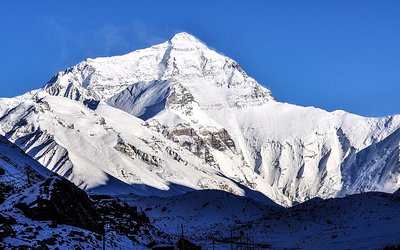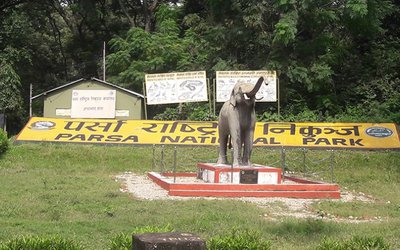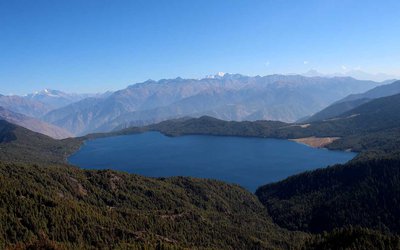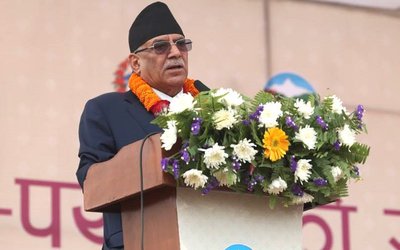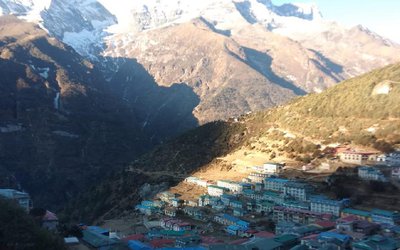The surroundings of the Fewa Lake give tourists everything that they want for a relaxing moment during their Nepal trip. Tranquility and beauty combine here to lure visitors, who stay longer than they were expecting. A French traveler describes it as a “black hole of Nepal,” that is, “once you arrive here you just don’t want to leave.” For who gets bored, when tennis and golf, paragliding, and a wide range of trekking, and in the future, even sky diving, are there.
A consequence of the success is a building fever. In a few years, a hill with jungle turned into a hill with hotels. Everybody wants a piece of the pie. The scenery is obviously changing quickly. Besides that, there is the public construction project at the dam going on today. Ever since the construction of a road to Pokhara in 1968, the city never stopped evolving.
Illegal tourism
While wandering around in Pokhara, it would come as a surprise for tourists to know that the height of the buildings is limited to two floors. The law dates back to 1977, when there was still enough land to implement this visually nice law. But the reality has changed. The expansion of the population (both tourists and residents) created demand for higher buildings. Everywhere in the city are buildings that are too high according to the law. “We would rather see the law change from a maximum-law to construction-laws,” says Bharat Raj Parajuli, a hotel owner and vice-president of Western Regional Hotel Association. Currently, there is no real monitoring of the construction-standards and the accessibility of the houses, which makes the area very vulnerable for disasters like earthquakes or fires.
A lot of the hotels were built in the last few years, because people know that the government of this new federal democratic republic is weak. Today there is almost no control by the government. Everyone takes the illegal jump in the tourism-trade. “If you look at the law, almost every house in Pokhara is illegal. Like everywhere in Nepal. But now it is too late to make that undone, what is built is built,” states Parajuli.
Fewa Lake
A very delicate subject is the around three-year old law that says that the distance between the lake and the houses should be at least 65 meters. The District Development Committee made this decision to create a buffer zone. Suddenly the land of a lot of people became worthless. The logical agreement would be that those landowners receive a monetary compensation for the loss of their land. Sadly, that still did not happen. Megha Nath Kafle, Executive Officer of Pokhara Submetropolitan, explains: “The District Development Committee didn’t get the support of the political parties for that decision. And with the current tension in the political world, compensation seems further away than ever.” That sums up an extra reason why people decided recently to start building for tourism, whether it is legal or not.
Though almost every house has some illegal aspect, the uncertain situation makes the owners insecure about their business. They would rather keep silent on the subject and if someone breaks the silence, he will get a warning with bricks and sticks. A sudden governmental change is not expected, but the long term vision stays uncertain and that scares people.
Dam
Besides the numerous private constructions, there is currently also a public one. The goal is to enlarge the lake and keep it that way with the help of a dam made by stones. Last year, the lake was enlarged by 20 – 30 meters, by taking out mud and sand. The piles became the new contours of the river. “But the force of the monsoon would create erosion and make the job undone. That is why we want to protect the dam by building one of bricks in front of it,” explains Kafle.
Gathering the funds for this project was not an easy task. According to Kafle, ten million rupees comes from the development ministry, but besides that four million was collected from businessmen and tourism organizations, who all made some donations. Parajuli speaks of his vision: “I hope that there is enough money provided to finish this project before the tourist-season starts again in October. The dam can be nice for tourists and is a good initiative to support the Tourism Year 2011, although it would have been better if the job was finished before the start of 2011, but the funds were not there yet.”
Character
With the dam, Pokhara tries to bring more structure. For example, the lake will be less accessible for women who now wash their clothes where they want and in the end the community will get a cleaner lake. In contradiction with these plans, stands another law from 1977. Arun Raj Poudel, head of the planning and building permit section of the City Office explains: “There should be two meters between every house, so the Fewa Lake is easy seen by everyone. The Fewa Lake is seen as the wealth of the whole of Pokhara, it is not just the property of the Lakeside-people.” The dam will create an opposite situation.
So will the Nepali character, that tourists like so much, get lost? Three years ago the place was filled with rice fields, today there is the dam that has to protect the many hotels. Can the community of Pokhara carry all those rapid changes? Mayor/Executive Officer Kafle is full of confidence that the dam will only have positive effects on the city. “Now the lake is not a nice sight for tourists, but we hope to end the project by the end of June before the tourist high season,” he adds.
Despite the current efforts, the general feeling about construction in Pokhara (and similar with a lot of places in Nepal) is not positive. There is almost no long term planning and that has its effect on the implementation of laws. Poudel, of the planning and building permit section, feels sorry about this situation. “All the monitoring bodies have failed. We do have a small team of municipal police, but that is not functioning well.” He feels that it should get supported by the law, local communities, stakeholders and so many other concerned authorities. “Not only the owners of the illegal buildings can be held guilty; all the concerned authorities, land mafia as well as the political instability are equally responsible for this situation of no return.”
And yet, Pokhara wins on many things, compared with other cities in Nepal. Pavements are widely available, there is a lot of electricity and the city feels very clean. Why is Pokhara able to do this, although it gets tested by the same problems as cities like Kathmandu? Parajuli says: “First of all, tourism in Pokhara started later than in Kathmandu. We could already learn from the mistakes that the capital had made and increased our awareness. The tourism in Pokhara is also mostly run by local people who love their hometown. They feel the responsibility for their land to do it good. Despite the lack of help from the government towards Pokhara, we are able to construct most of our facilities and infrastructure ourselves. And that is and will be the strength of Pokhara and its Fewa Lake.”
- TANAHU HYDROPOWER PROEJCT: A Significant Achievement
- Apr 15, 2024
- AMBASSADOR HANAN GODAR: Sharing Pain With A Nepali Family
- Mar 30, 2024
- VISIT OF KfW AND EIB TO NEPAL : Mission Matters
- Mar 25, 2024
- NEPAL BRITAIN SOCIETY: Pratima Pande's Leadership
- Mar 24, 2024
- NEPAL ARMY DAY: Time To Recall Glory
- Mar 15, 2024

